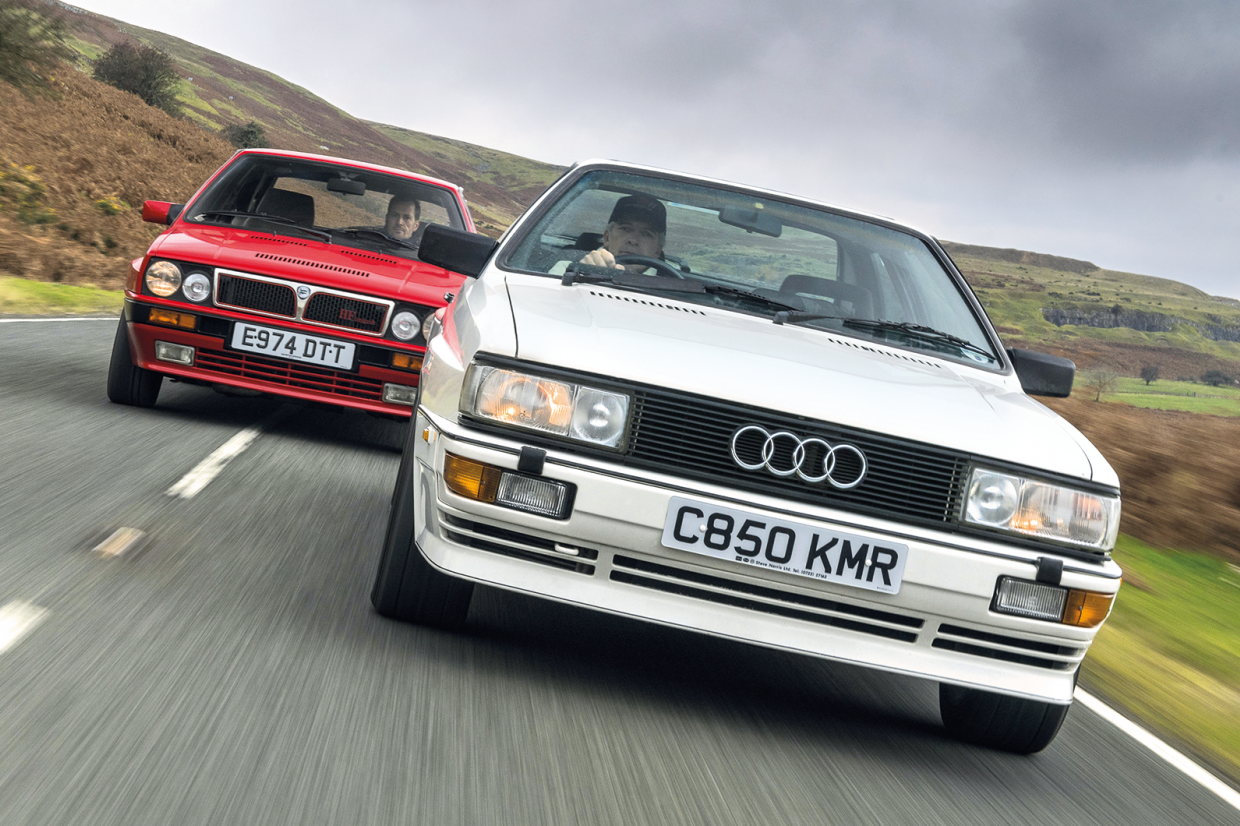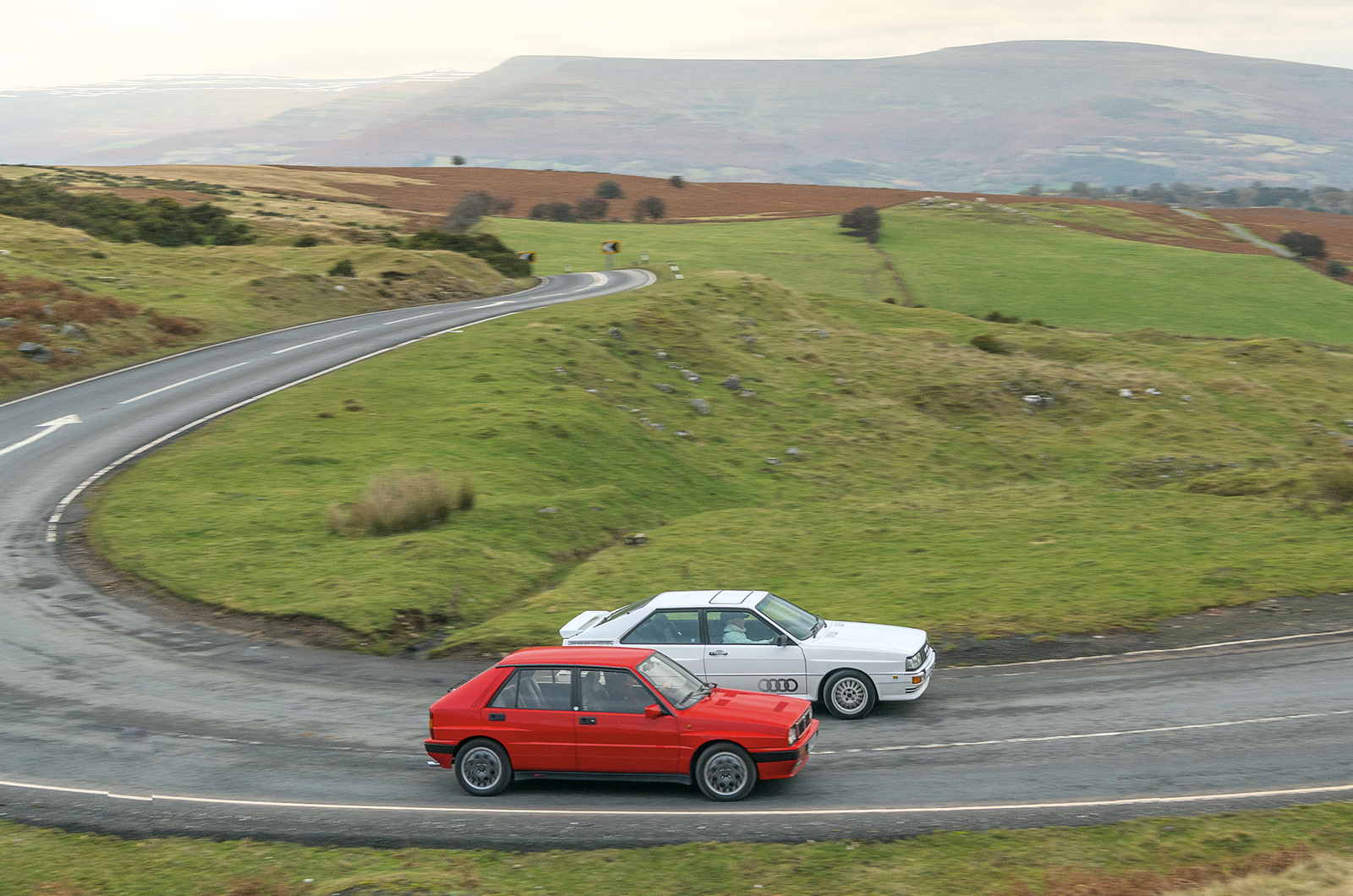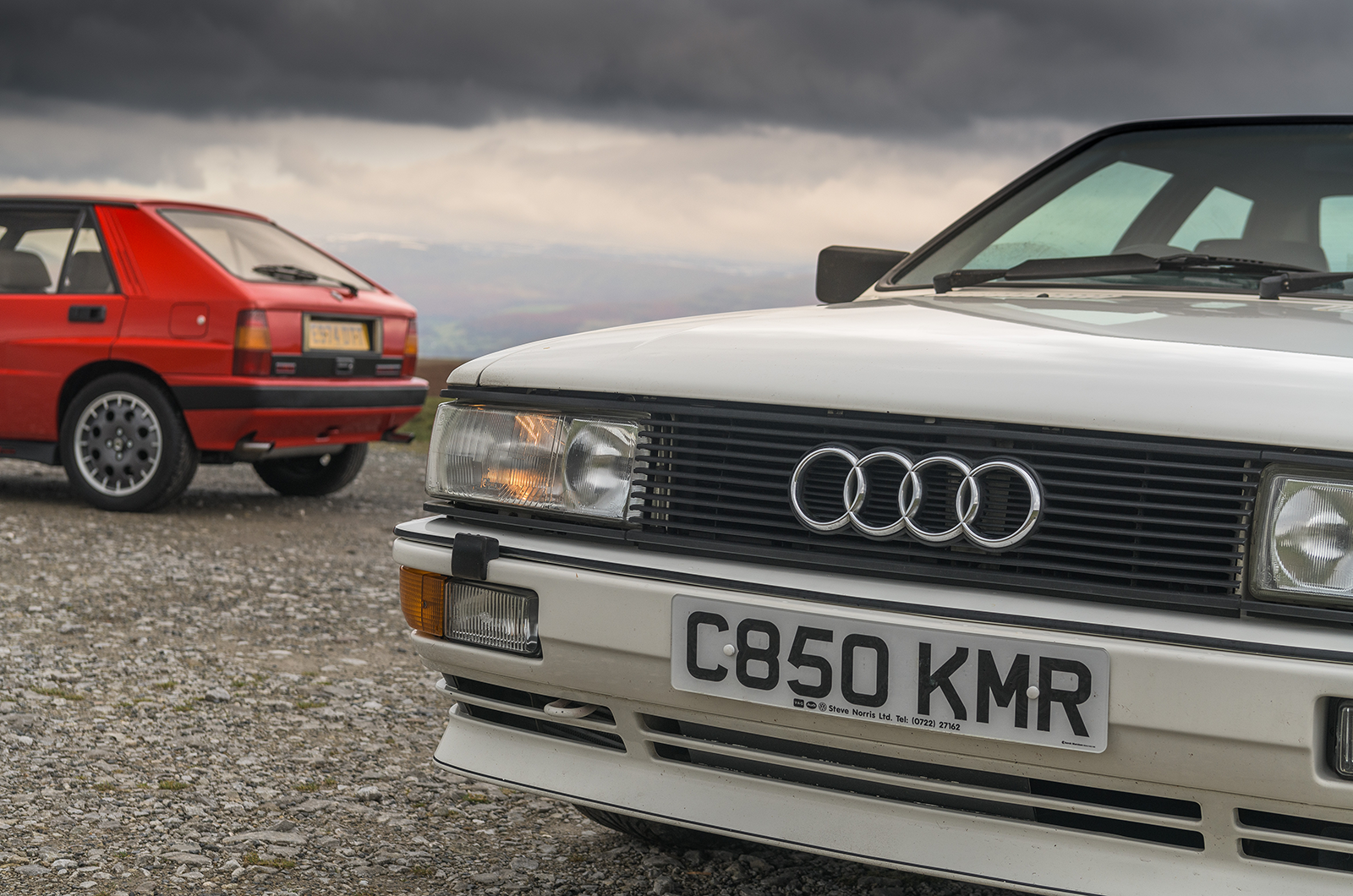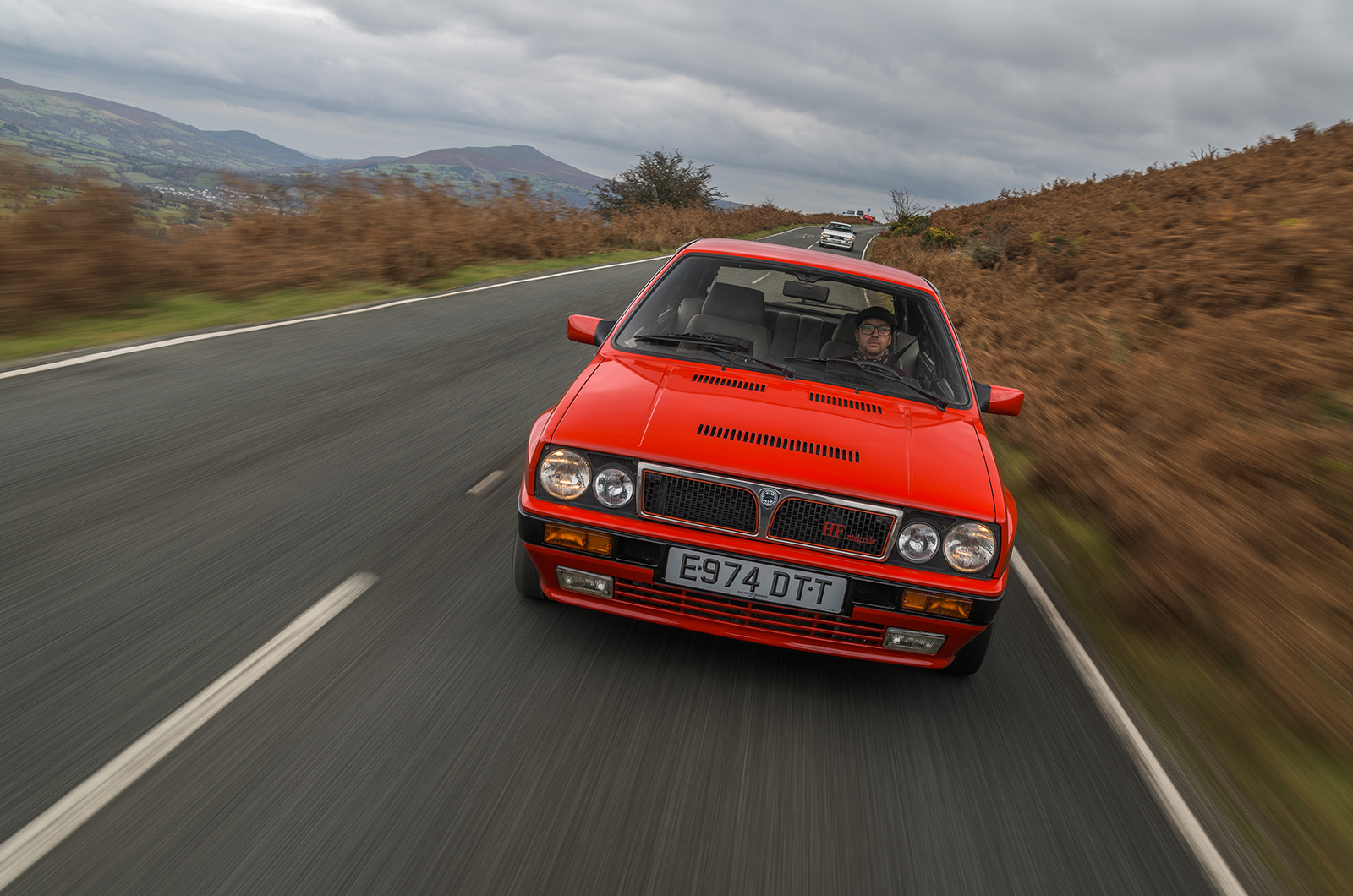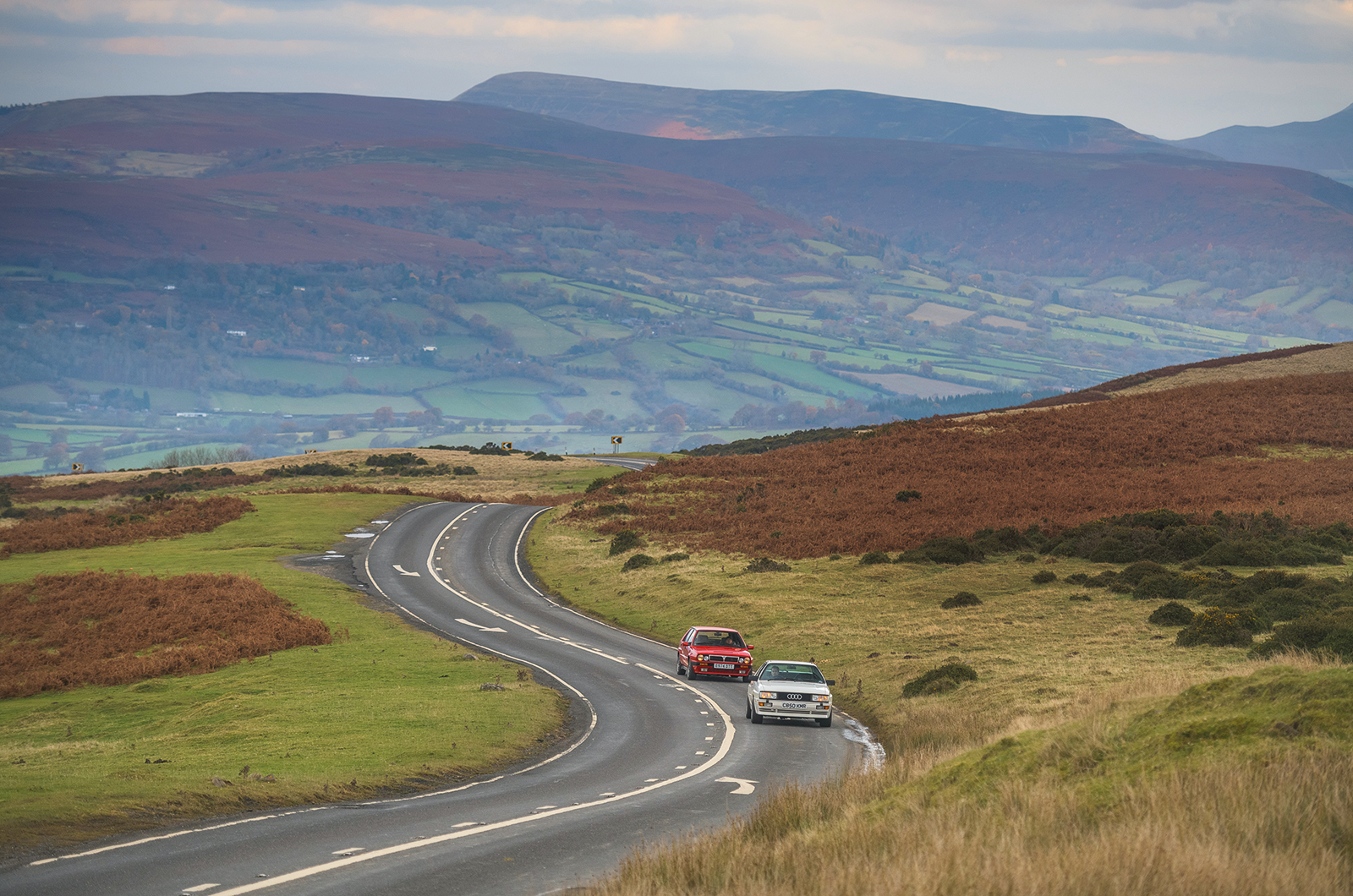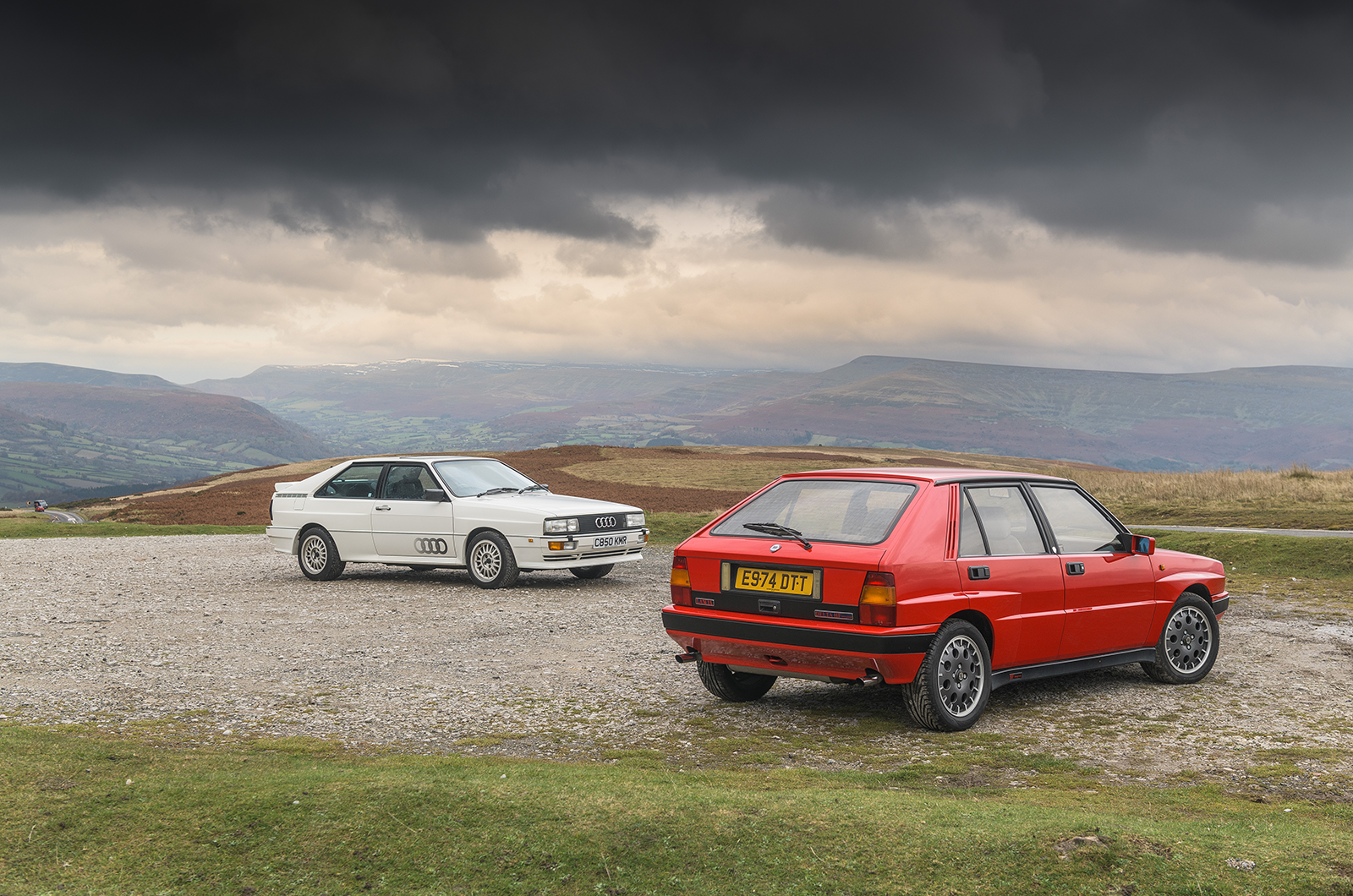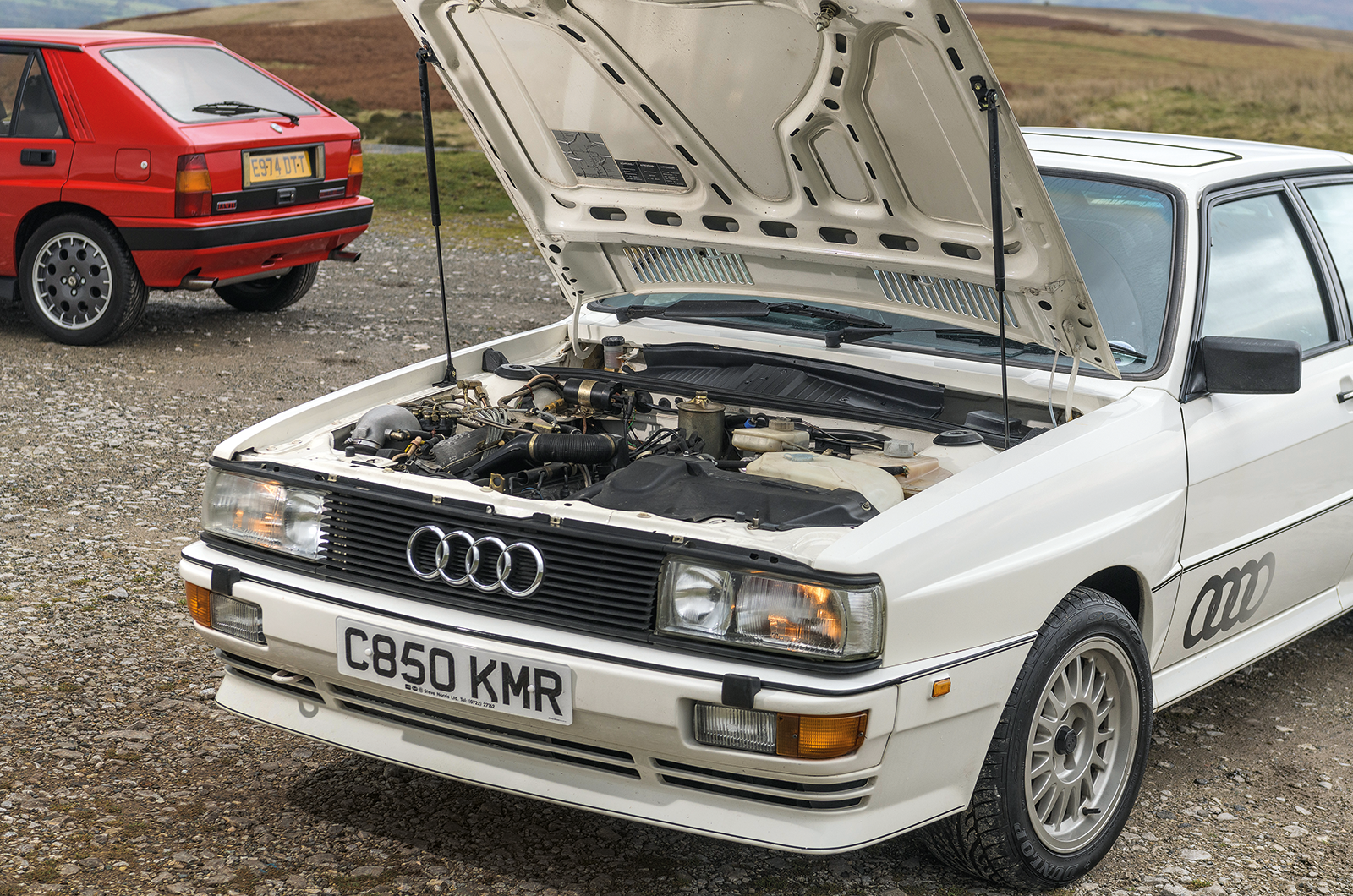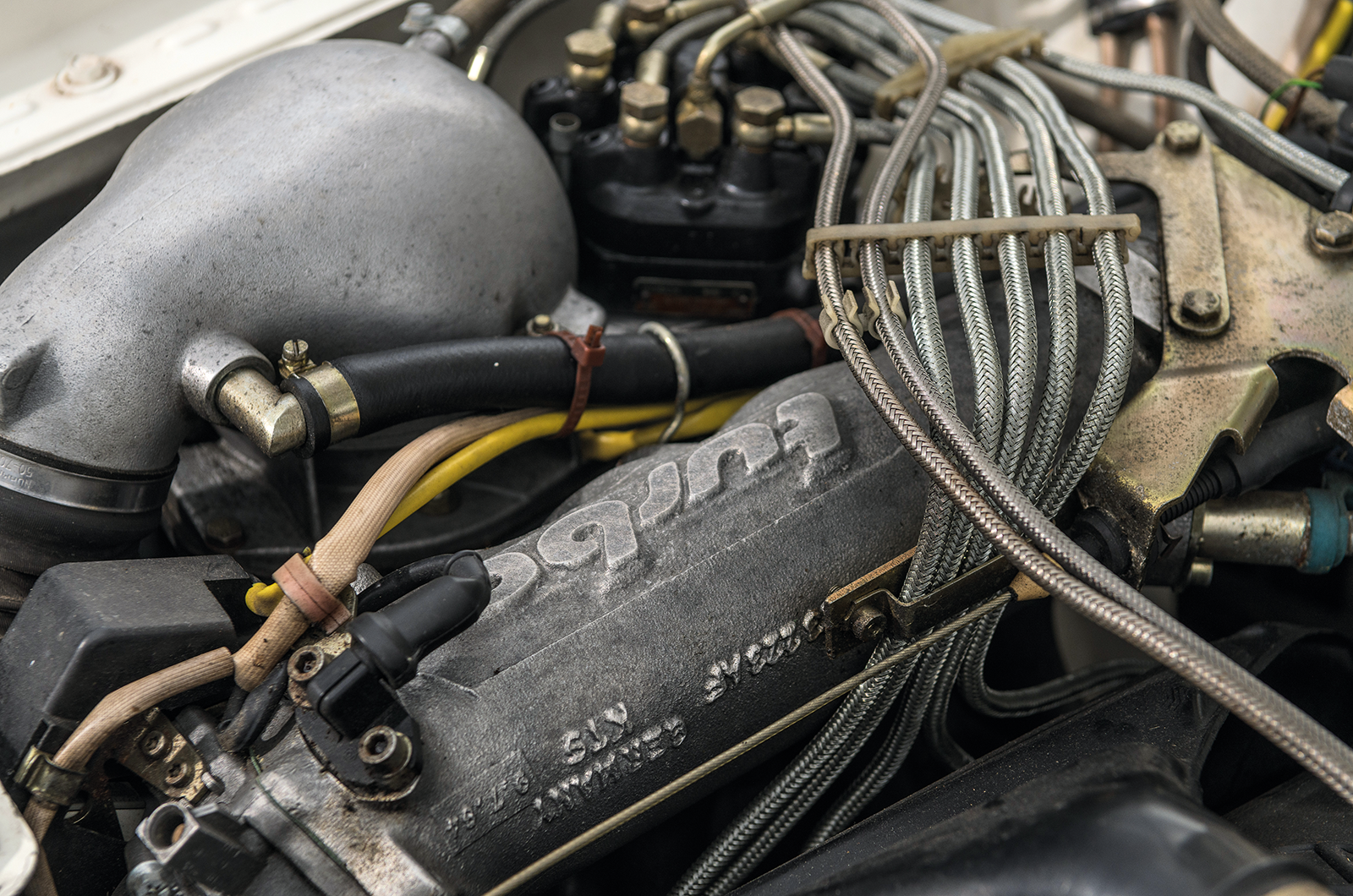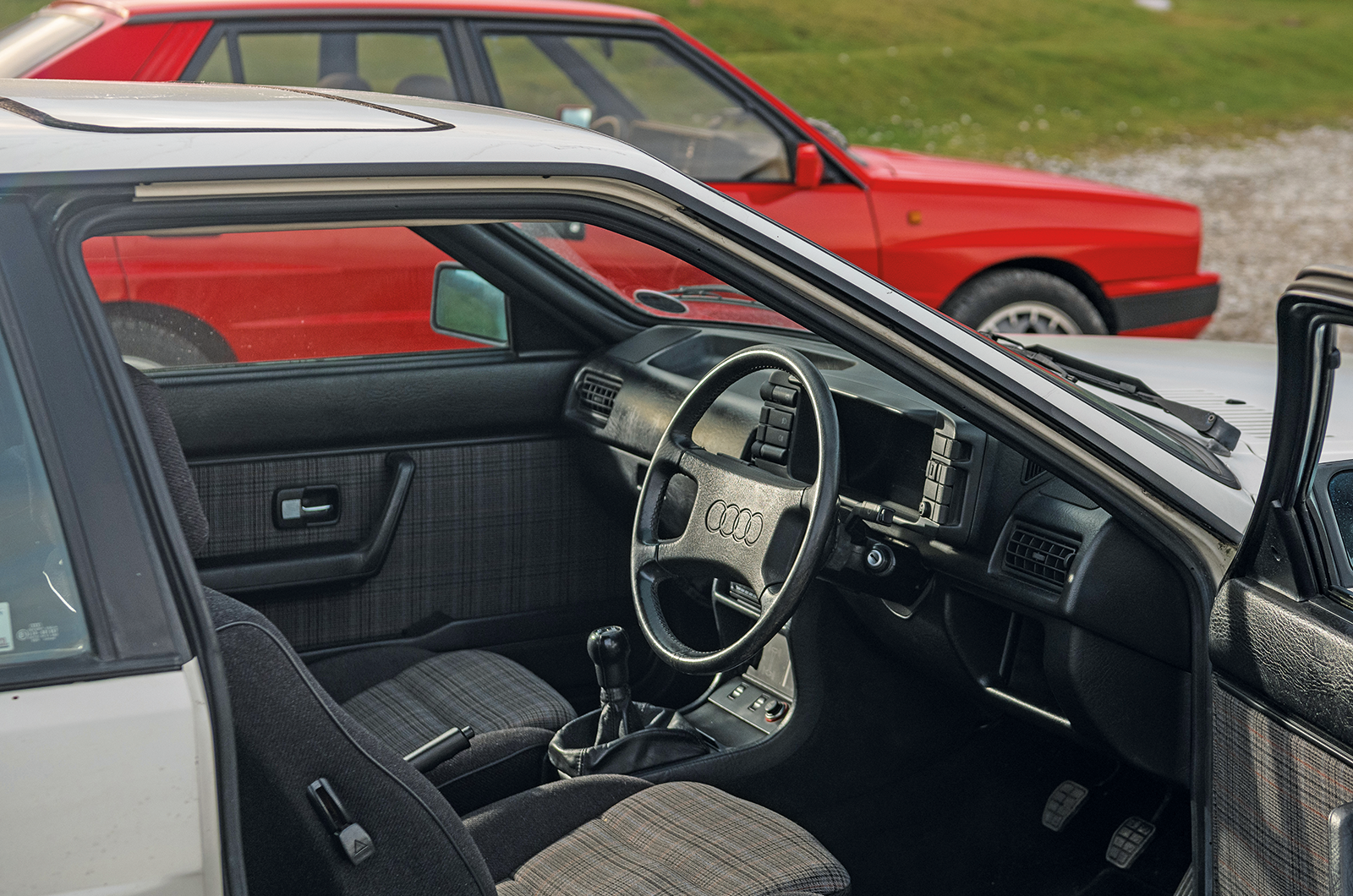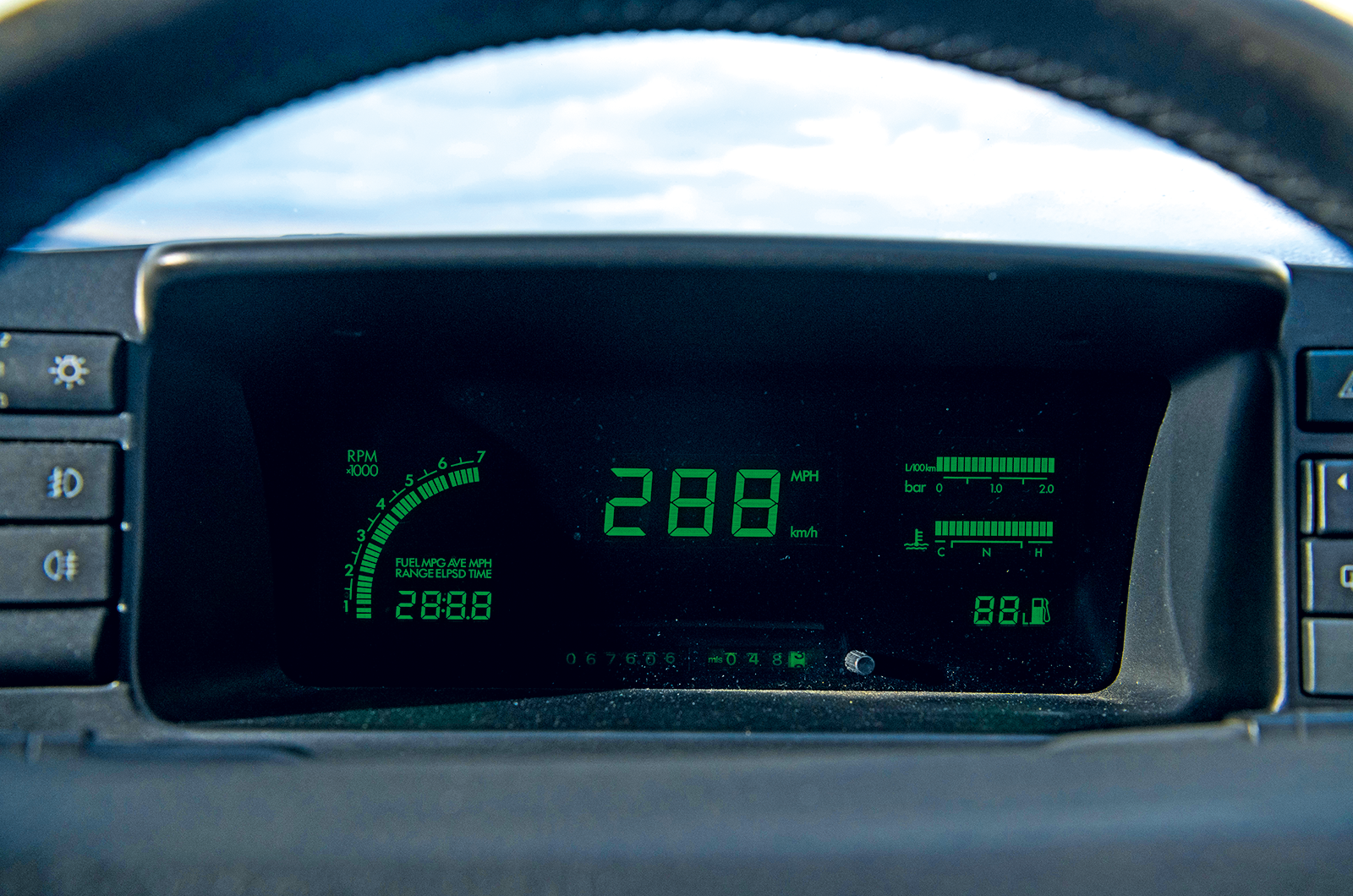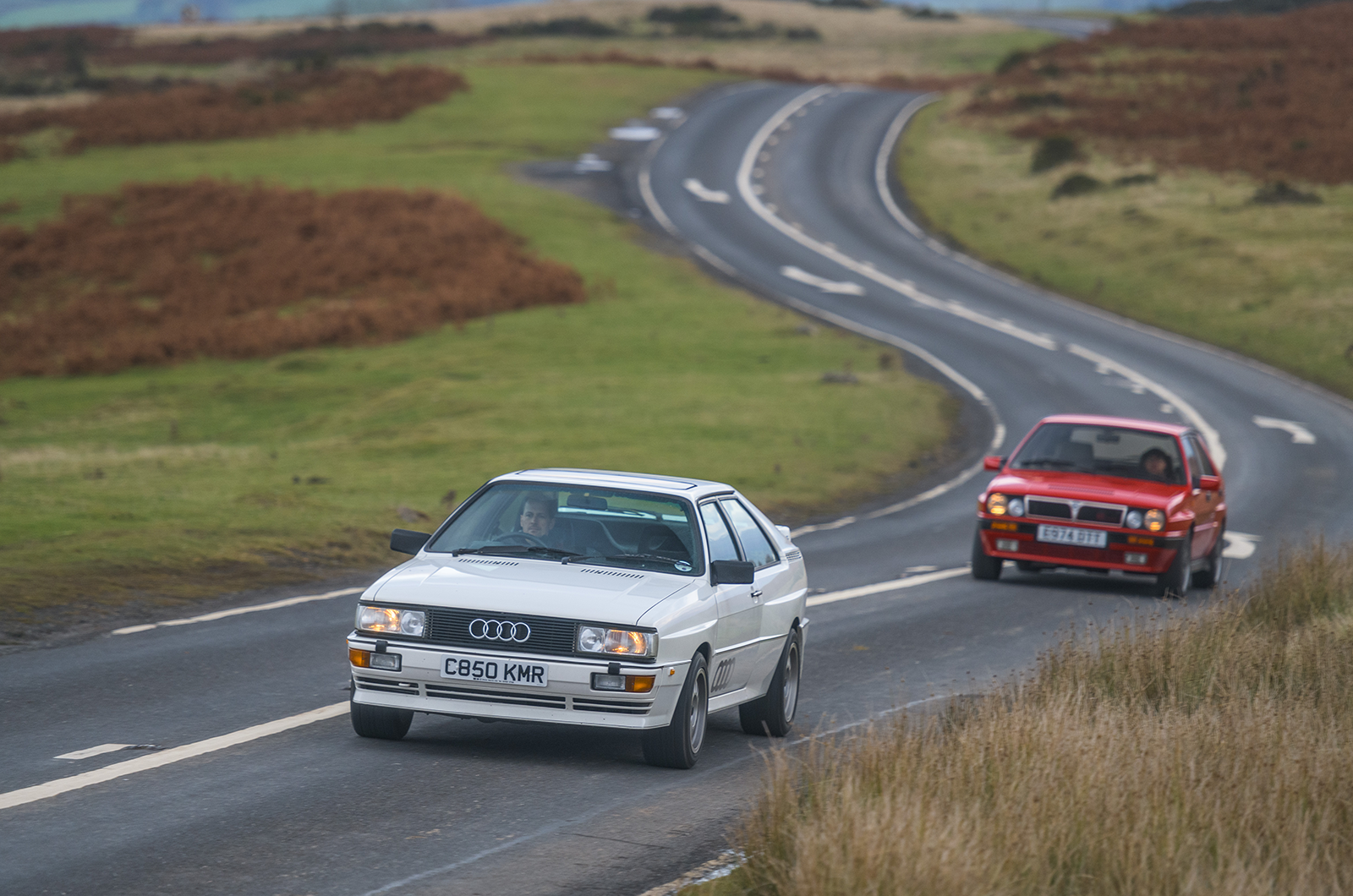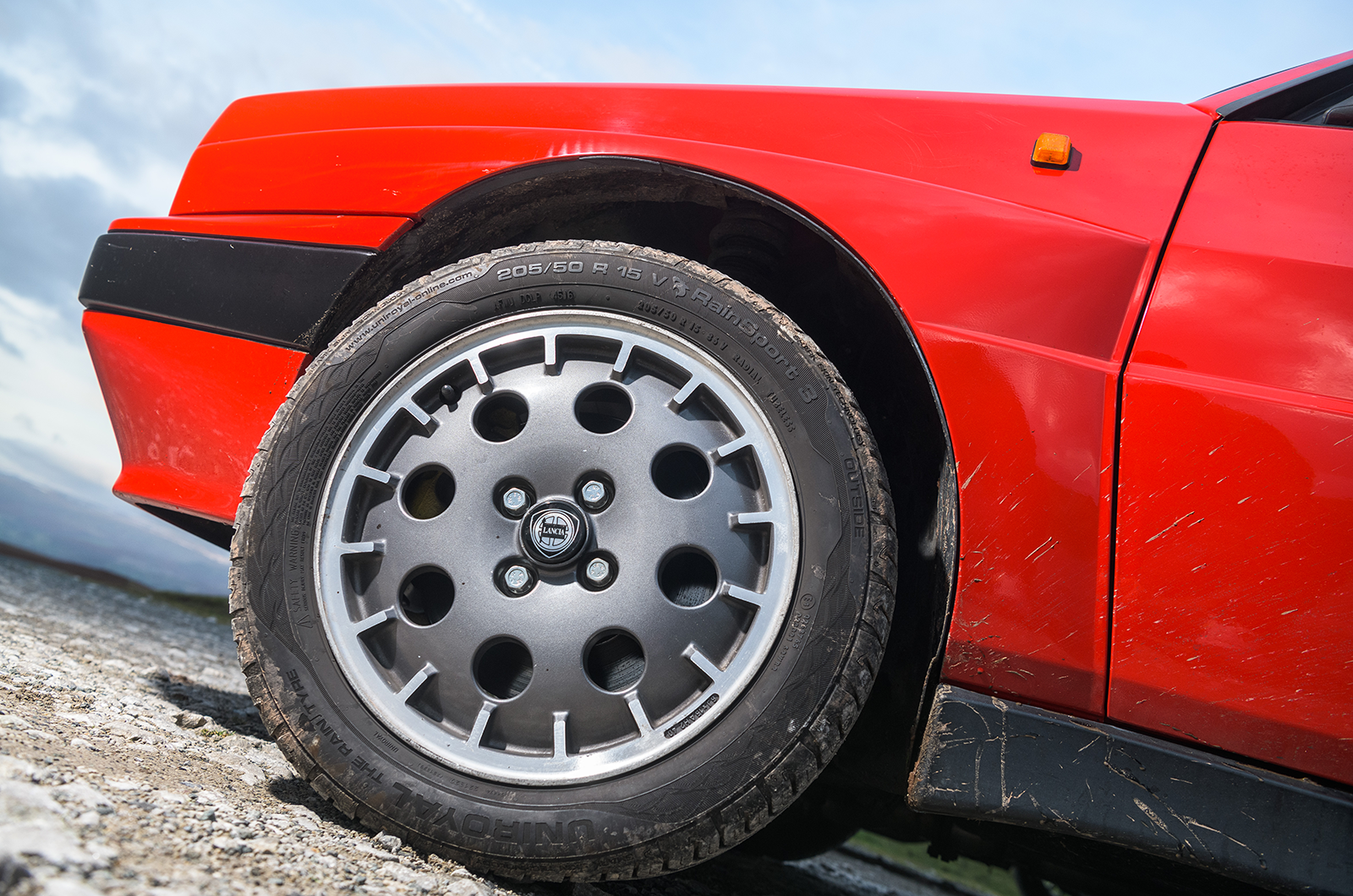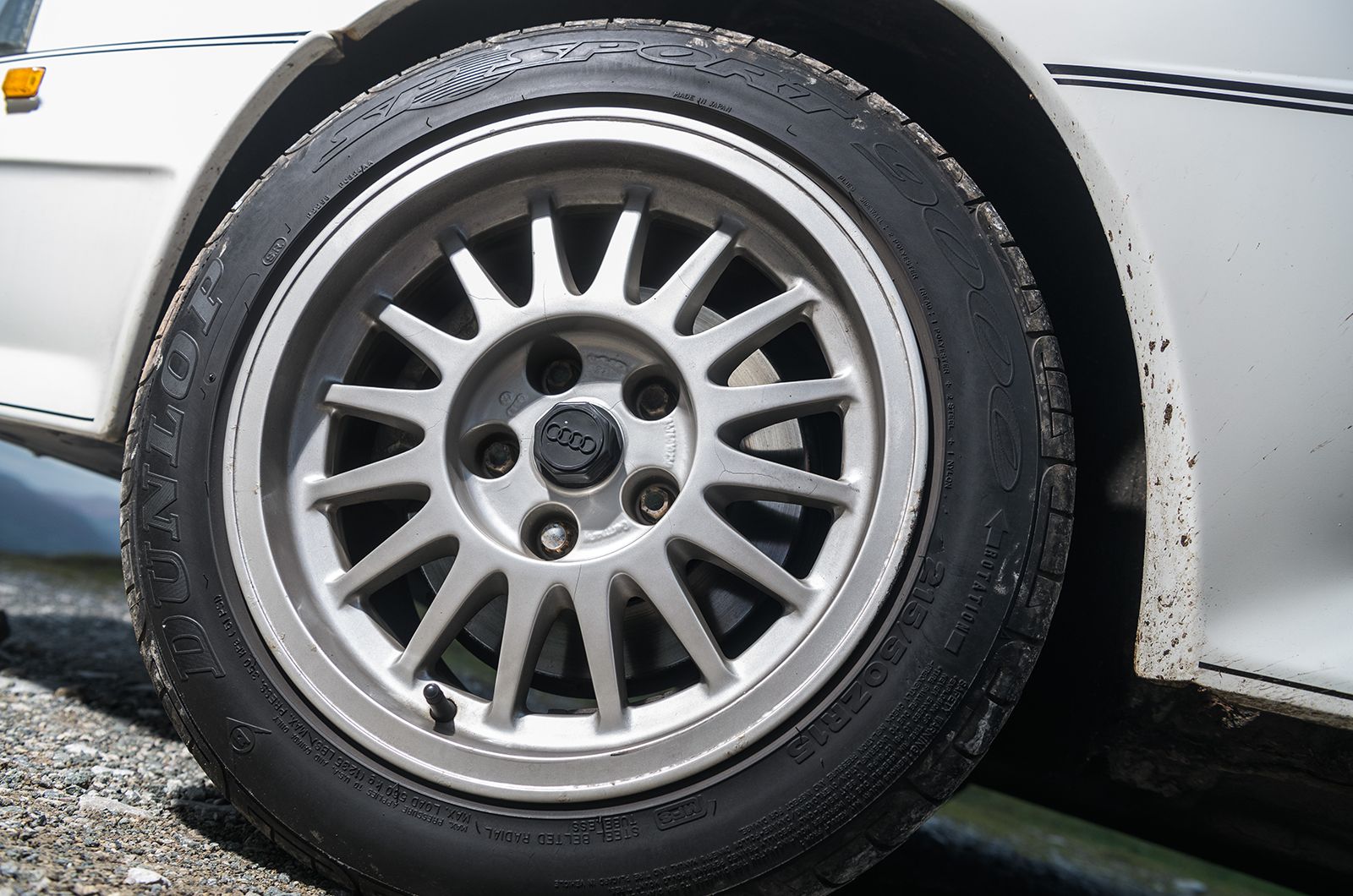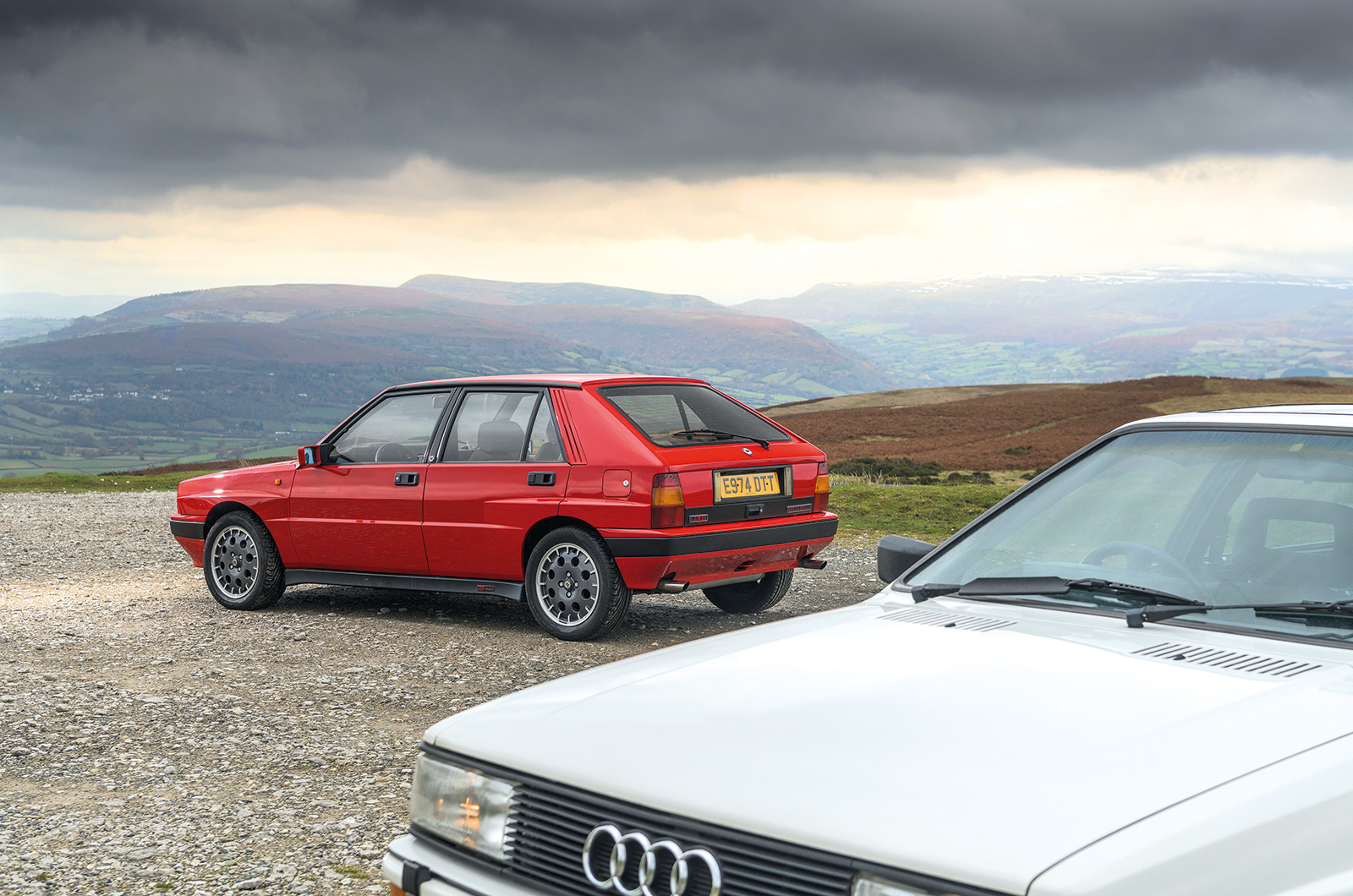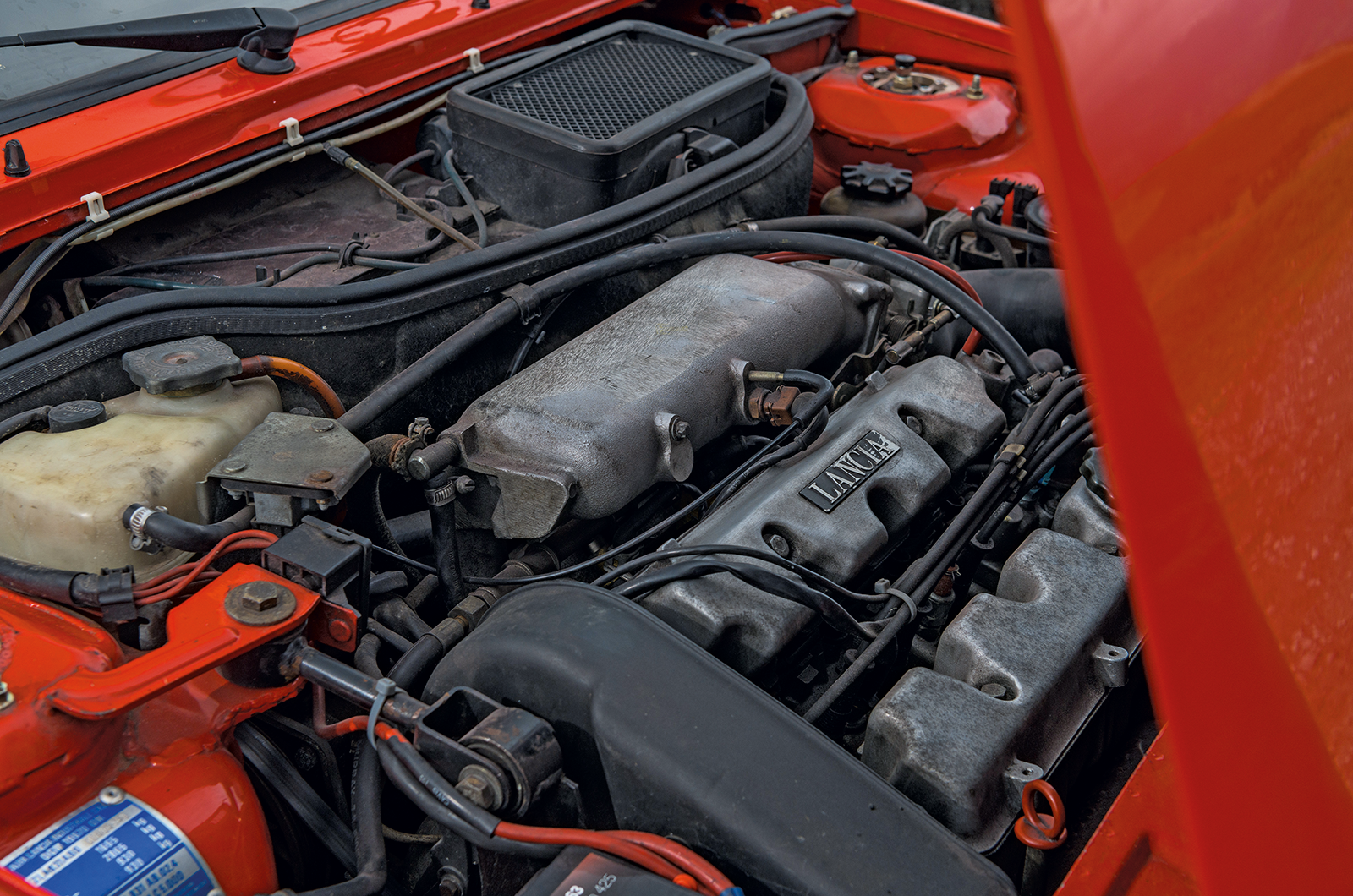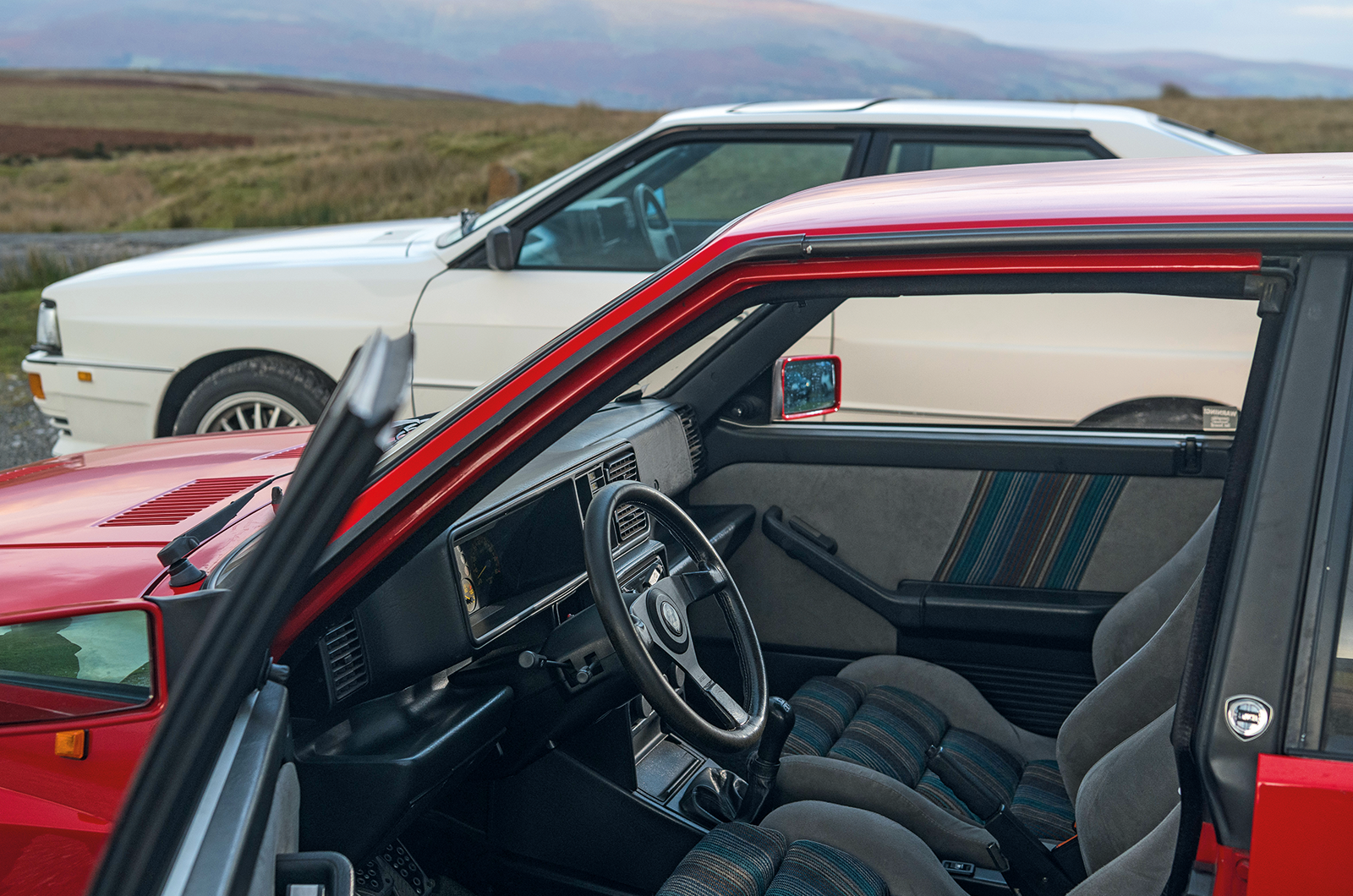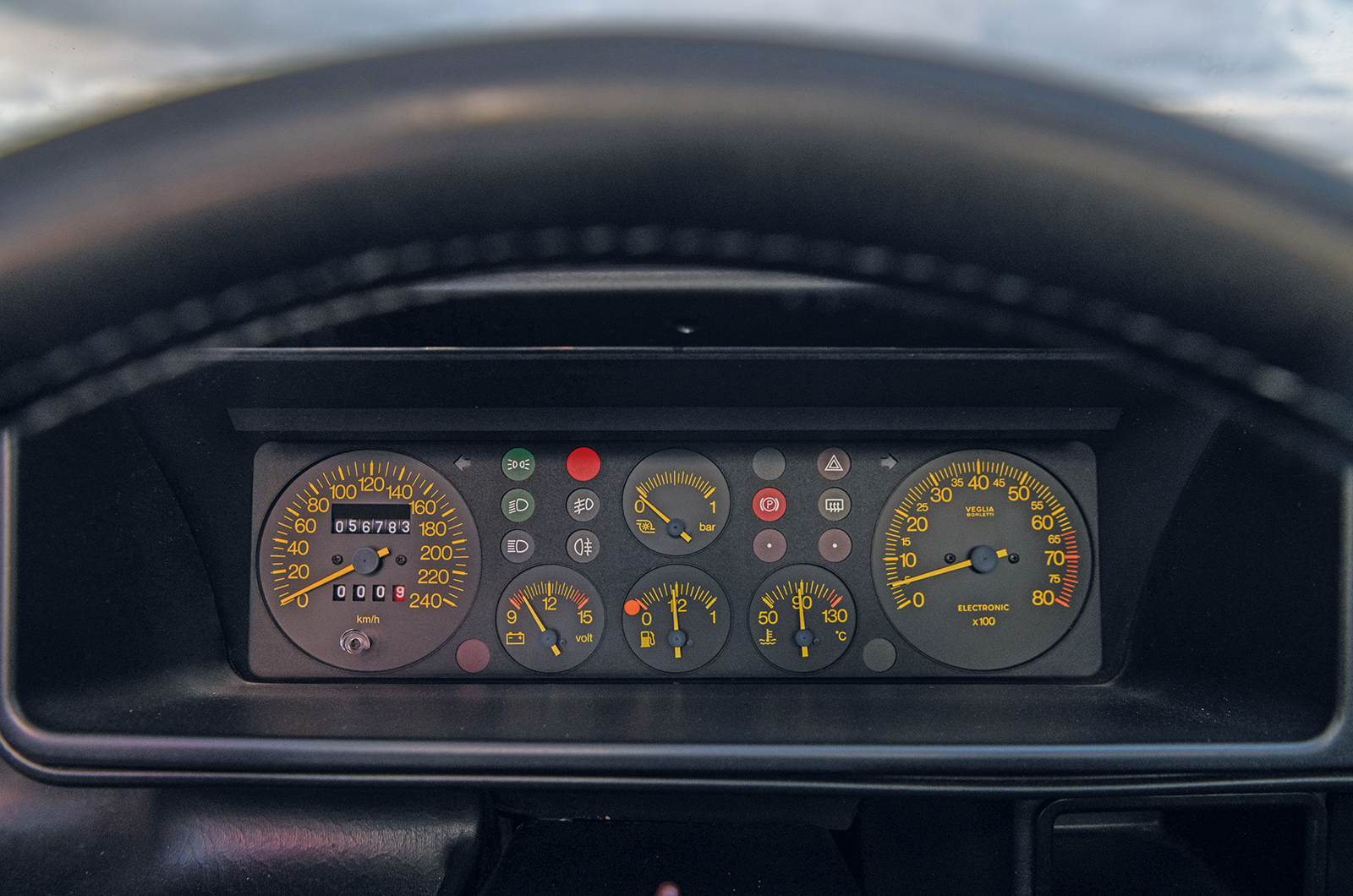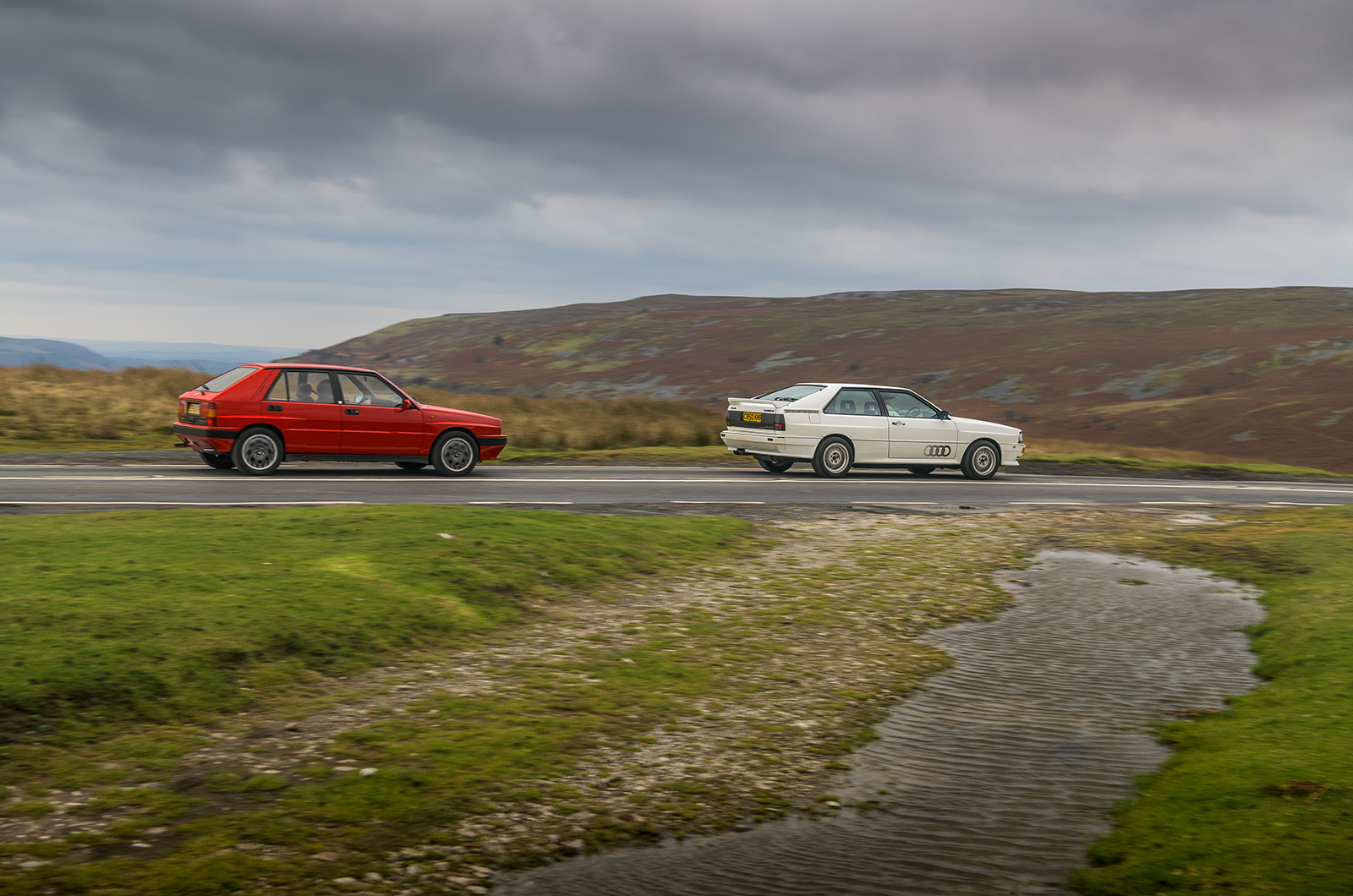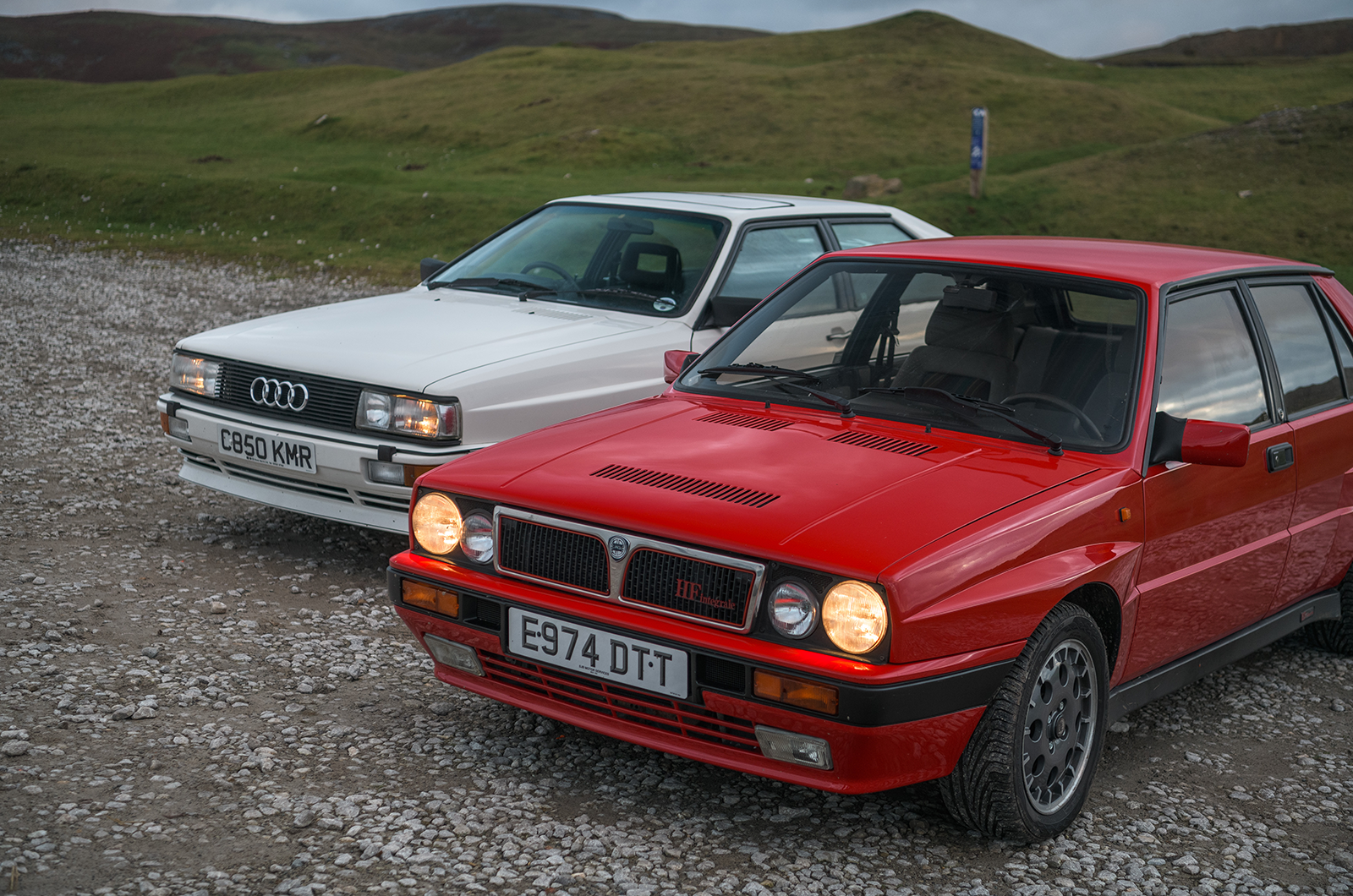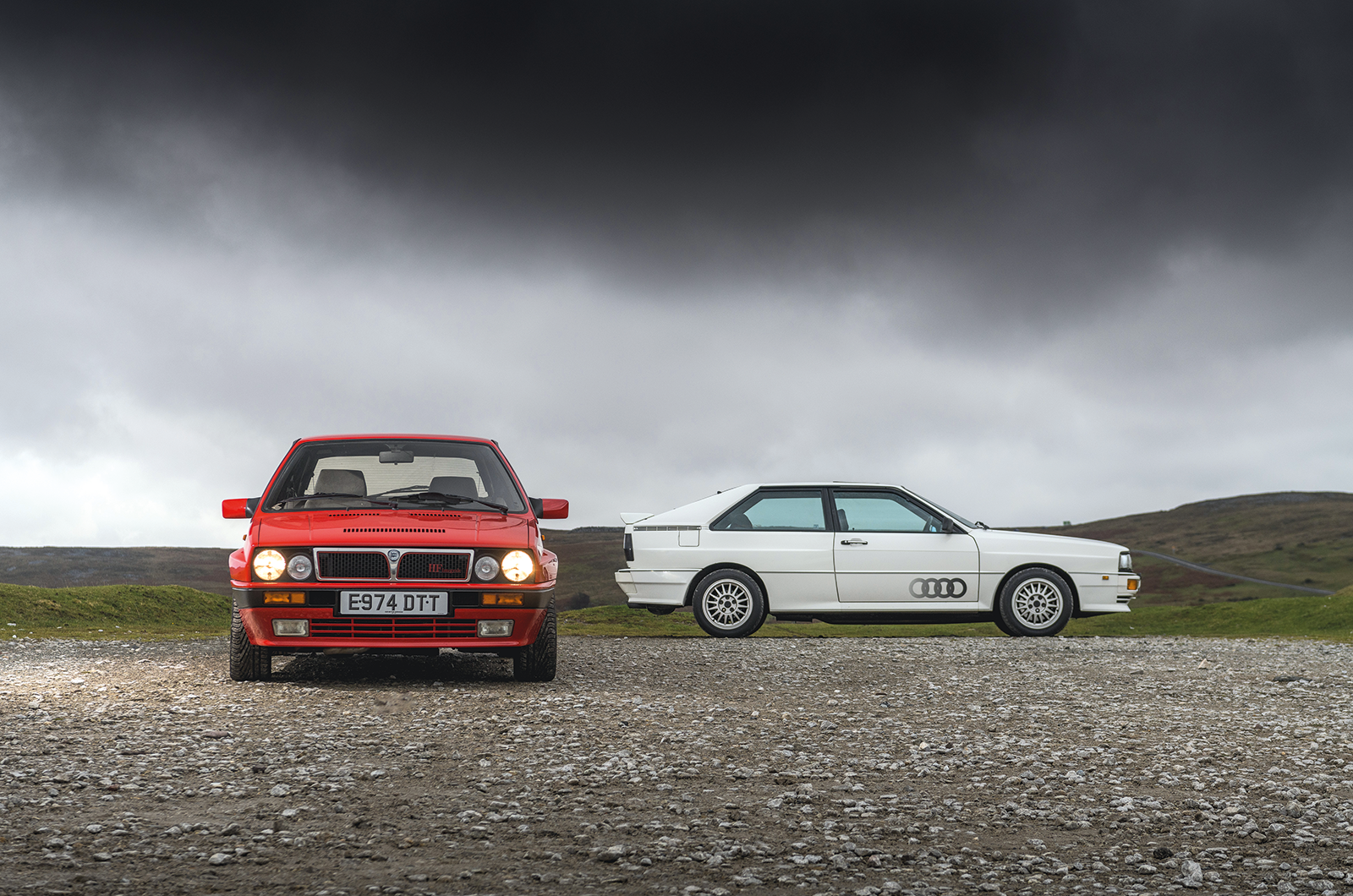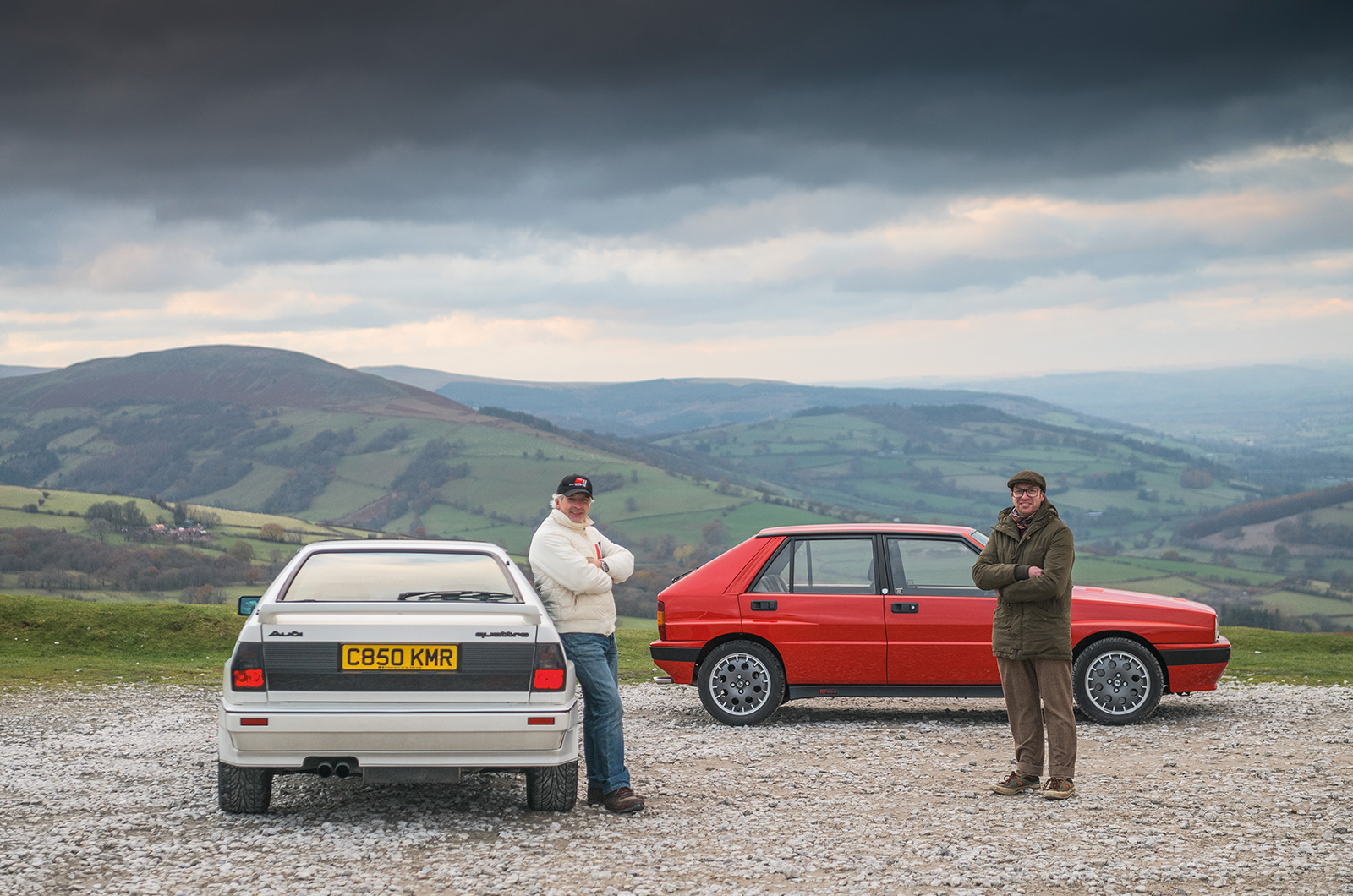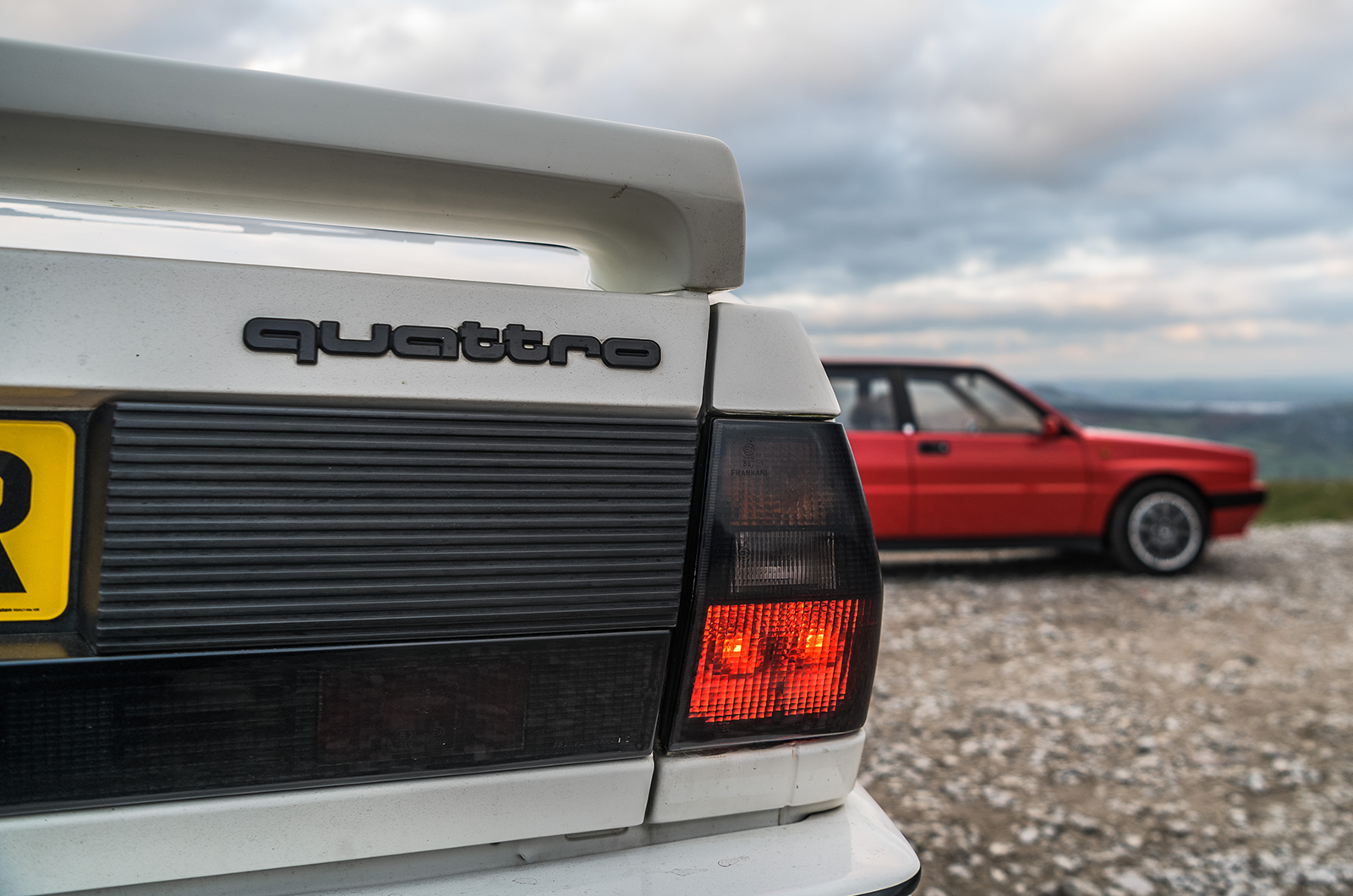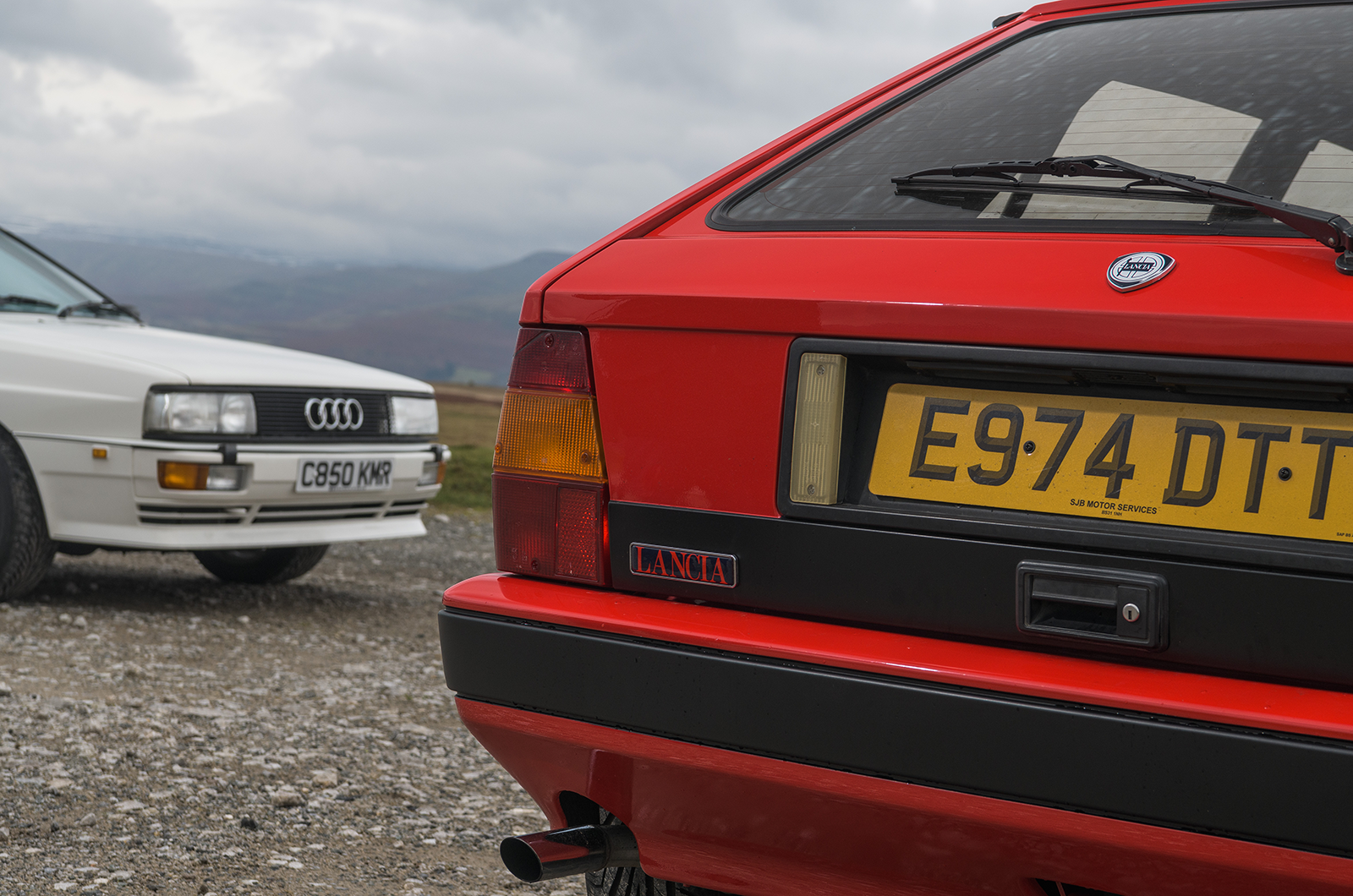But you approach this meeker early 8v car with no less enthusiasm. With advice from owner Jeffery-Bradley not to spare the horses because the car can definitely handle it – and a warning not to wind the window down more than halfway, because it definitely can’t – the keys are snatched from his grasp and thrust into the steering lock.
Like almost all Integrales, this Italian-market car is left-hand drive, though the differences between it and the Audi aren’t limited to the side the wheel is mounted. The driving position is more upright; the windscreen, too.
It almost feels like a bigger Innocenti Mini De Tomaso, and you drive it in exactly the same way. “Now maximum attack,” as Alén used to say.
The abrupt clutch and light gearshift make strange bedfellows and the ergonomics are typically chaotic.
There’s a comprehensive eight-dial analogue dashboard, but the Momo wheel rim manages to completely ruin the view of the important bits of both speedo and rev counter.
Fortunately, you can feel and hear enough that you can live without both.
Twin balancer shafts add refinement to the in-line ‘four’, but it’s never what you’d call musical.
The throttle response feels softer than the Audi’s, and it’s a surprise to discover the Delta’s steering doesn’t have that same sensitivity in the first few degrees on either side of the straight-ahead. But that gives it a solid, planted feel.
There’s a pleasing meatiness to the steering, a connection to the front tyres that encourages you to lean on them even in the very early moments of getting to know the car.
Roll your wrists into a bend and it’s the Delta that better resists body roll. Push hard into a tight corner and it’s the Delta that’s less inclined to push wide.
Climbing back on to the throttle on the way out? They feel evenly matched, contemporary figures suggesting that the Lancia pipped the Audi to 60mph by a solitary tenth.
The Integrale’s mid-range pull is monstrous, stronger even than the Audi’s, the only disappointment being that it doesn’t quite sustain the lunge into the last section of the rev counter; you need 16 valves for that.
Stomp on the brakes, though, and there are no let-downs. The middle pedal feels beautifully firm, the hallmark of a car that lives to be beasted.
If you really were looking for an everyday classic, you’d be both cruel and spectacularly brave to pick the Delta over the quattro.
Both could take the vagaries of the British climate, and the Delta’s rear doors and practical hatch mean it’s genuinely family-friendly. Until it breaks and your family defriends you.
The Lancia’s thin tin and iffy electrics wouldn’t thank you for it, and while you quickly acclimatise to life on the left, it’s still not as straightforward as sitting on the UK-correct side.
No, ideally you’d want both: a late, galvanised quattro for hacking about through the week and a Delta for weekend use.
And as recently as a decade ago you could have afforded to do that. Not any longer.
The low-mileage Audi that Edwards paid £6500 for is now insured for £40k, and the leggier Lancia is worth around £25,000.
Let’s face it, for all their all-weather capabilities, these are special-occasion cars. And one feels slightly more special than the other.
Head says Audi; ears, too. But I’d go for the Delta, and brace myself for the inevitable blues.
Images: Olgun Kordal
Thanks to Lancia Motor Club; Quattro Owners’ Club
Owners’ views
Darron Edwards, Audi quattro 10v
“It’s the sight and sound for me,” says engineer and confirmed quattro nut Darron Edwards. “I remember watching them rallying on ITV’s World of Sport and instantly wanted one. I wouldn’t care if it did 0-60mph in 12 secs, I’d still want one.”
In fact, he has four: an early left-hand-drive car that’s about to undergo a major restoration, a black WR, an early Group 4 Rally replica, and this white car. A two-previous-owner WR, it’s all original and has just 64,000 miles on its digital clocks.
“It used to be tricky to get parts,” says Edwards, who bought his first quattro in 1992, and now spends much of his time repairing them for other enthusiasts. “Before the internet really took off you were at the mercy of rip-off specialists charging fortunes for parts. Now you can source spares from all over the world.”
Steven Jeffery-Bradley, Lancia Delta Integrale
“I always had a thing for 1980s turbo cars,” says Steven Jeffery-Bradley, as he tries to explain why a man who services and repairs Mercedes-Benz cars for a living is so smitten by a bright-red Italian rally weapon.
“I’ve had Escort and Fiesta RS Turbos, an Uno Turbo, a Renault 5 GT Turbo, and I’d had my eye on this Delta Integrale for a while.”
The owner had no intention of selling, but when he passed away in 2015 Jeffery-Bradley stepped in rather than see the rare 8v fall into unsympathetic hands. Not that it was pristine as bought.
“You name it, we’ve had it fixed,” says Jeffery-Bradley. “A top-end engine rebuild, plus brakes, suspension, a rear-axle rebuild and a full respray. I wasn’t even sure how much I’d like it when I bought it because I couldn’t drive it. But I’d never sell it now. I don’t think my son would forgive me, anyway.”
Factfiles
Audi quattro 10v
- Sold/number built 1980-’91/11,452 (all)
- Construction steel monocoque
- Engine iron-block, alloy-head, sohc 2144cc 10v ‘five’, Bosch K-Jetronic fuel injection and KKK turbocharger with intercooler
- Max power 197bhp @ 5500rpm
- Max torque 210lb ft @ 3500rpm
- Transmission five-speed manual with integral centre differential, AWD
- Suspension MacPherson struts, anti-roll bars (front only from 1982)
- Steering power-assisted rack and pinion
- Brakes 11in (280mm) ventilated front, 9½in (244mm) solid rear discs, with servo
- Length 14ft 5¼in (4404mm)
- Width 5ft 7¾in (1780mm)
- Height 4ft 5in (1346mm)
- Wheelbase 8ft 3¼in (2524mm)
- Weight 2844lb (1290kg)
- 0-60mph 6.5 secs
- Top speed 138mph
- Mpg 19.9
- Price new £24,204 (1986)
- Price now £25-50,000
Lancia Delta HF Integrale 8v
- Sold/number built 1987-’89/9841 (8v only)
- Construction steel monocoque
- Engine iron-block, alloy-head, dohc 1995cc 8v ‘four’, Weber fuel injection and Garrett T3 turbocharger with intercooler
- Max power 182bhp @ 5300rpm
- Max torque 224lb ft @ 3500rpm
- Transmission five-speed manual with integral centre differential, AWD
- Suspension MacPherson struts, anti-roll bars
- Steering power-assisted rack and pinion
- Brakes 11¼in (284mm) ventilated front, 9in (227mm) solid rear discs, with servo
- Length 12ft 9½in (3900mm)
- Width 5ft 7in (1700mm)
- Height 4ft 6¼in (1380mm)
- Wheelbase 8ft 1½in (2480mm)
- Weight 2793lb (1267kg)
- 0-60mph 6.4 secs
- Top speed 130mph
- Mpg 17.6
- Price new £25,862 (1988)
- Price now £20-45,000
READ MORE
Buyer’s guide: Lancia Delta Integrale
Quattro power: how Audi's turbo 4x4 changed motoring forever
Soul sisters: Fiat X1/9 vs Lancia Beta Monte-Carlo
The 15 greatest Monte Carlo Rally-winning classics of the WRC era
Chris Chilton
Chris Chilton is a contributor to Classic & Sports Car
